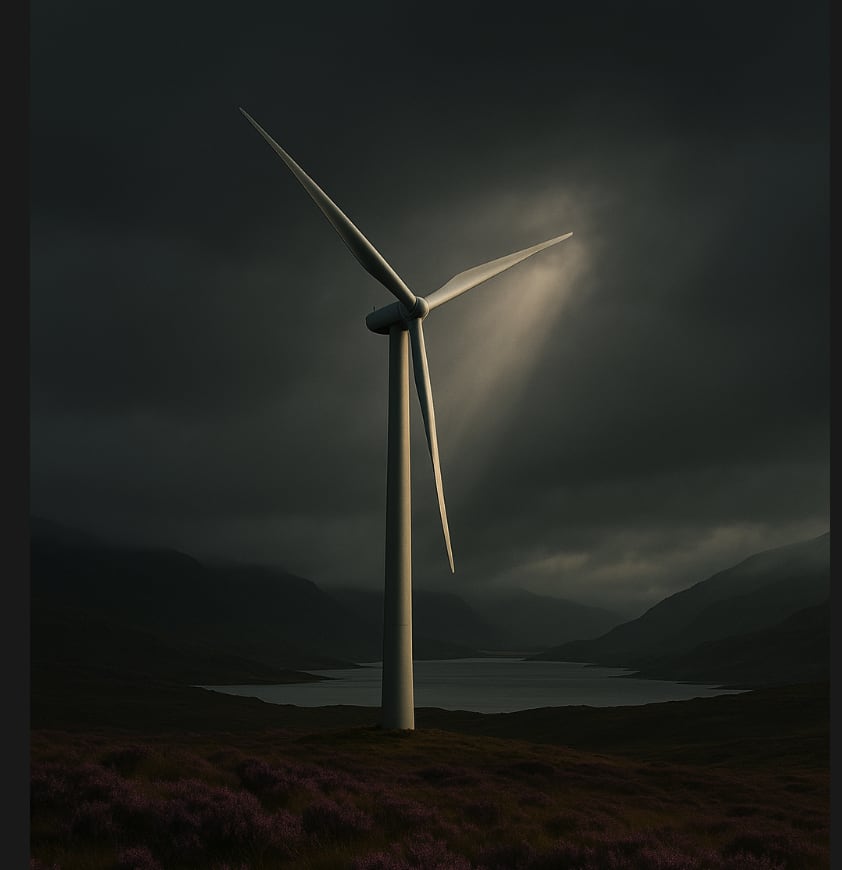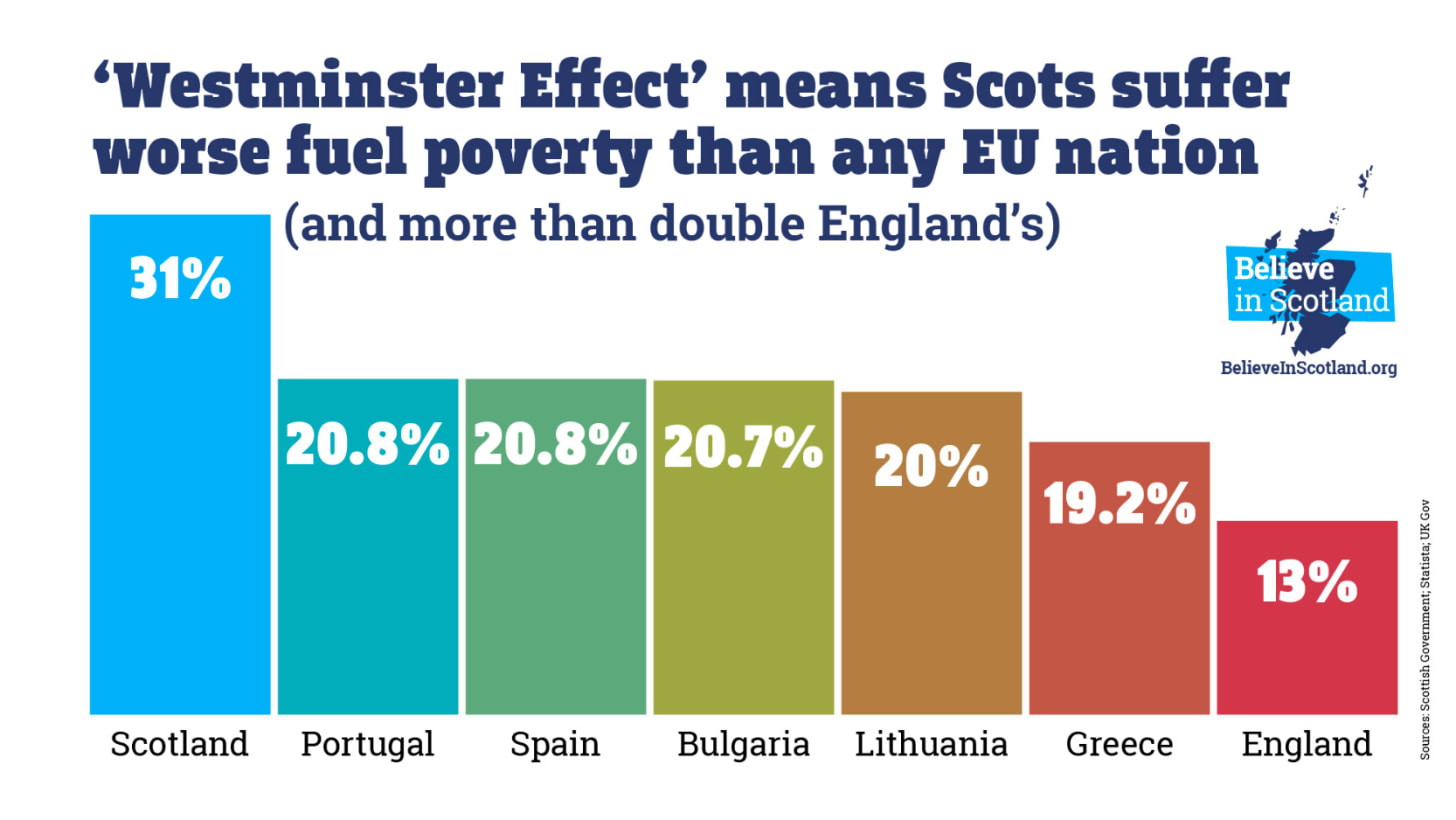After three years of consultation on reforming energy pricing, the UK Government has decided to do… almost nothing. A few minor tweaks. It’s putting a cherry on the dog’s breakfast that is the UK’s broken energy system.
This decision is a disaster for the Highlands and Islands. Because what most people don’t realise is that we’re already living under a kind of zonal pricing — it just works in reverse. We pay more to receive energy, and small producers are charged more to supply it.
It’s an upside-down system that punishes the very region that’s generating some of the cheapest, cleanest energy in the UK.
No Gas, No Choice – Just Big, Big Bills
Most of the Highlands and Islands aren’t connected to the gas grid. So we have no choice but to rely on electricity to heat our homes and cook our food.
And electricity, across the UK, is priced much higher than gas. That means people here end up paying dramatically more. While someone in London heats their home with gas at 8p per kilowatt hour, we’re paying about 30p for electricity.
Many households pay more than double the UK average- about £4,000. Some people – in modern, well-insulated homes avoid this – but most rural housing isn’t like that.
Our Highland cottage, which is mostly heated by woodburners, costs £4,000 a year to run. A retrofit to make it more energy-efficient would cost tens of thousands of pounds. That’s not unusual.
In the Western Isles and other parts of the north, families are going without heat because they simply can’t afford it. And this isn’t just bad for households — it’s bad for whole communities.
Depopulation and Falling School Rolls
It’s hard to keep families in rural areas when energy bills are this iniquitous. It’s hard to attract them to low-wage jobs when they know they’ll be handing over a quarter of their income just to keep warm. Another pressure on these areas. already struggling with falling school rolls and the exodus of young folk.
Energy poverty is nearly three times higher in Scotland than in England — and much of that is concentrated in the Highlands and Islands.
Depopulation isn’t inevitable. It’s a direct result of political choices — and energy pricing is one of the biggest.
Businesses Are Being Crushed
In the UK, domestic consumers at least have a price cap. Businesses don’t. And up here, they can’t access cheaper gas either.
That means Highland and Island businesses — hotels, hairdressers, farms, food processors, breweries — are facing the highest commercial energy bills in the world. It’s not uncommon to hear of businesses spending tens of thousands a year just to stay open.
Many are going under. Some are just holding on. But all are being constrained by a system designed for someone else’s convenience.
We’re Powering the UK — and Being Bled Dry
This is what makes it especially galling: the Highlands and Islands are pumping out vast amounts of renewable power — far more than we can use.
Scotland produced 113% of its electricity needs from renewables last year, much of that from wind, much of it from here. The wind is free. The infrastructure – a turbine and a connector – is simple. And yet we see no benefit.
Zonal pricing would have helped rebalance the system. It would have made electricity cheaper in the areas where it is cheapest to produce — as it should be. But that’s not what the UK Government wants.
The case for zonal pricing
The case for zonal pricing is based on the argument that, one, it would be fairer to an area like the Highlands and Islands, which is churning out cheap power but paying high prices to use it.
Two, it would make the best use of existing infrastructure by encouraging energy intensive business to relocate to where the energy prices are lower. That means you have to build fewer pylons and subsea connectors to move the power south.
And three, it would reduce wastage. If the power was more affordable it would be used instead of wasted.
The case against
It is true that most of the energy firms putting in new wind and tidal power developments in the Highlands and Islands oppose zonal pricing,
They argue they would not be able to make a profit on their projects and in many cases they would need to abandon them altogether if they were not guaranteed high retail prices for their energy. Even as it is, their projects are often quite marginal in terms of profitability – and they are commercial businesses so they can’t go ahead if the numbers don’t stack up
In part, that is because small renewable developers are being charged ten times more to connect to the grid than those in the south of England. They are subsidising what should be regarded as essential national infrastructure paid for by people across the UK. If they didn’t have to bear that cost, they would find it harder to argue against zonal pricing for their energy.
They also worry about the uncertainty of the transition period before demand would be boosted by the lower prices.
Backing for the transition instead of nuclear would help
The UK government is investing £30 billion in the nuclear industry – if they invested that in supporting the transition to zonal pricing and reworking the national grid instead, it would be a game changer.
Better still – why not create a publicly owned power generation company that could focus on delivering benefit to citizens not profit for shareholders?
Can a privatised system deliver the energy we need at prices we can afford?
In the 1990s, the UK Government – one Scotland didn’t elect – privatised our national grid. No other country in Europe did that, (apart from Portugal, which was undergoing a financial crisis.)
Privatisation has created a complicated situation where there are lots of businesses pursuing their shareholders’ interests at the expense of citizens and businesses. As with water, regulation has been weak and unable to cope with the lobbying and special pleading.
In the north, SSE owns the grid. And unsurprisingly, SSE doesn’t support zonal pricing. They’d rather the government poured billions into upgrading the grid they own.
But they are not a reliable guide to what is needed for delivering this essential service. As the convenor of Energy Scotland John Proctor put it: “You would not reform the gambling industry based upon the advice of casino owners.”
The Fake “Free Market”
We’re told energy is priced through a free market. But it isn’t. It’s a market warped by privatisation and loopholes.
The UK’s National Electricity Systems Operator NESO buys energy from producers and the price it pays is pegged to the price of gas. That’s because energy traders have been allowed to manipulate the system to their advantage. Renewables producers have no incentive to offer lower prices, because they know the system guarantees them the higher gas rate – so why would they sell it for less even when it costs much less to generate?
When the grid can’t carry more power south, generators are paid the current wholesale price of gas for every watt that is wasted when they are told to turn the turbines off. SSE made £2 billion last year, partly from these so-called “constraint payments.” That’s billions paid out to waste energy, while families in the Western Isles freeze.
The Market Isn’t Free — It’s Rigged
This is what happens when you privatise essential infrastructure and call it a market. There’s nothing “free” about it.
People in the Highlands and Islands don’t have the freedom to choose cheaper gas – it’s not there. We can’t negotiate fairer tariffs – they’re set in London. And local businesses aren’t choosing to pay more – they’re being forced to, just to keep the lights on.
This isn’t an accident. It’s not a failure. It’s a system designed to extract profit – not deliver fairness.
Dismissal of zonal pricing with a Londoncentric sneer
Eventually, the UK Government dismissed zonal pricing with a sneer. It implied that no serious business would ever relocate to the “remote” Highlands – much better to just to get the power flowing south to “where it’s needed.”
It’s insulting. It’s unimaginative. And it ignores the fact that countries like Iceland have built entire industries — from aluminium to sustainable data centres — around their local energy supply. Why not here? We have the power. What we don’t have is the political will.


